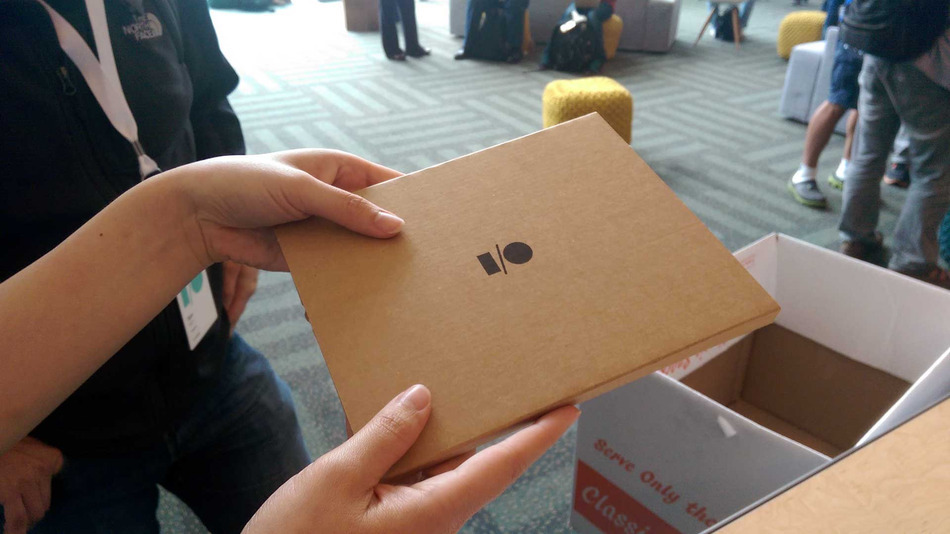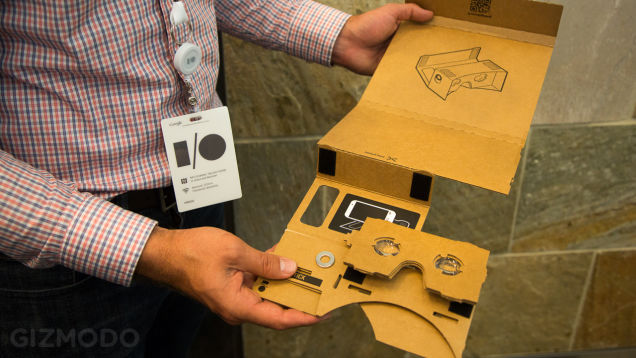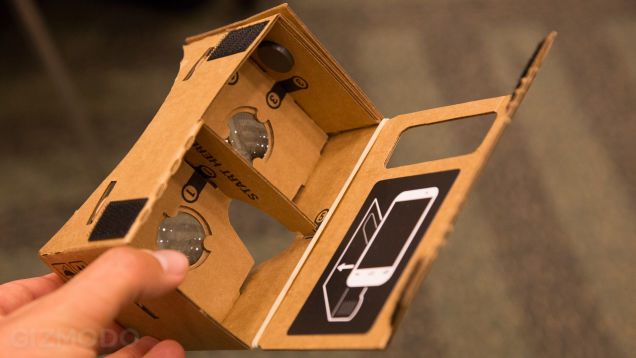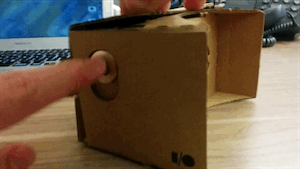Google's Incredibly Clever Cardboard Turns Your Android Into A Virtual Reality Headset
Google carves out a small slice of its annual I/O developers conference to give a shoutout to virtual reality, with a not-so-hi-tech invention.
Each year at I/O, Google gives all of the developers in the audience a gift. Some years it's a tablet. Some years it's a laptop. This year? It was a piece of cardboard.
And once you tear the seal on Google's lil' slab of cardboard, it becomes clear that this is no mere corrugated fiberboard. This is something more!
If you can bust out the skills you picked up at the University of Ikea and work your way through the the not-so-intuitive folding process, you end up with something wonderful. Paired with your Android phone, that origami’d cardboard transforms into a cheap, on-the-fly virtual reality headset. Put it together and this is what you get.
Google wants developers to combine the Cardboard with its experimental VR Toolkit to build immersive virtual experiences
Two Google employees at the Google Cultural Institute in Paris built Cardboard as part of a 20% project. Their bosses loved the smartphone housing so much, it inspired a larger group to build an experimental SDK.
Because the VR Toolkit is experimental, it won't get the same level of quality and support that Google offers to other Android SDKs and libraries – and Google has warned that the toolkit's contents may change or break without warning. Still, this is a fun way for developers to look at experimenting with VR.
Once you finish contorting Cardboard into shape, a rubber band and a velcro’d flap hold your Android phone in place
Like the actual Oculus Rift, two plastic lenses built into the face of Cardboard help to distort your phone’s screen in a way that helps wrap the image around your eye. That would have been enough, really. But Google took it one step further.
Midway through bending Cardboard into shape, you’ll notice a stray, circular magnet stuck to one of the flaps. It’s the very last piece of the construction process; the last thing you put in in place. Once everything is all folded up, you plop the magnet into a small groove on Cardboard’s exterior.
 gizmodo.com
gizmodo.com
Then you launch the Cardboard app. Right off the bat, a tutorial begins. “Turn your head to look around the app”, it reads. “To select an item, slide the magnet down then let go.”
This funny little cardboard faux-Rift has something even the original Rift itself does not: a built-in button
The magnet slides within its groove, then automatically slips back into a place because of another magnet on opposite side. Your phone is able to sense the magnet’s movement, allowing it to act as a ridiculously clever little button.
The cardboard app comes with 7 “experiences”, and each is pretty darned neat in its own right: YouTube lets you watch a selection of YouTube videos on a simulated theater screen, Street Vue lets you wander around in a VR version of street view, “Exhibit” lets you look at a few 3D recreations of objects, Earth Flyover lets you zoom around a city in Google Earth. Push the “button” to start flying forward, push it again to stop., Photo Sphere Viewer lets you look around in pictures you've taken using Android’s built-in 360º panoramic feature, Windy Day is a cute, cartoony environment where you can watch animals sneak around as leaves fall
Tour Guide has you explore the Palace of Versailles.
It's worth noting that early Oculus Rift prototypes were designed around an iPhone with a VR viewer – so the concept isn't that bizarre. It's kind of awesome.





